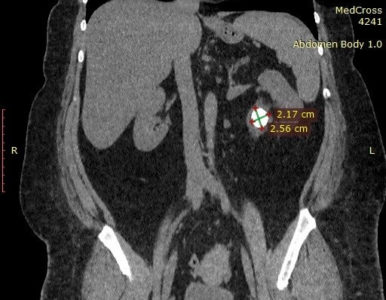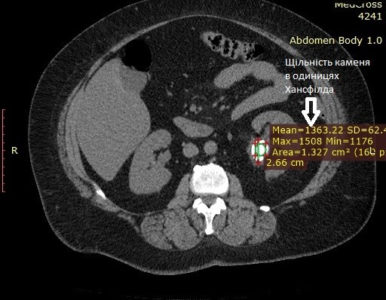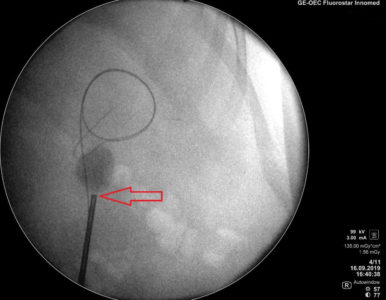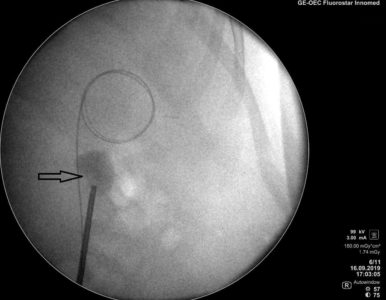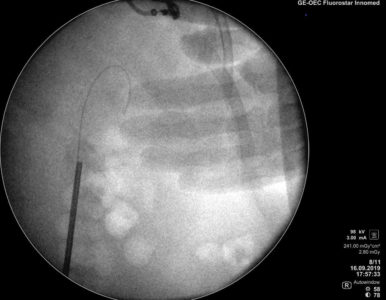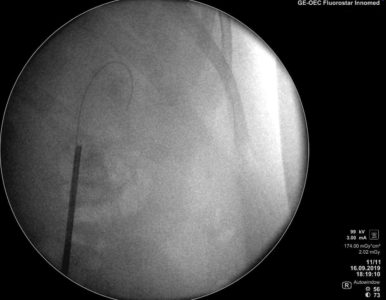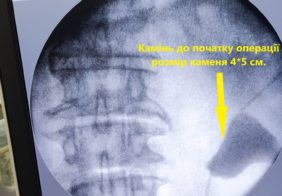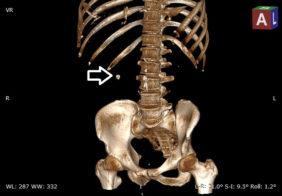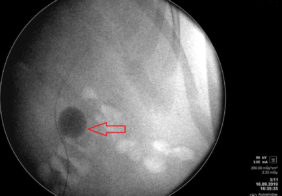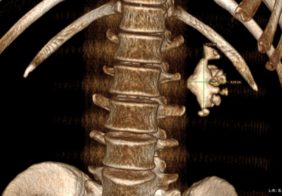A 2.8 cm calculus of the calyx
Patient Ch., a 46-year-old woman referred to the clinic with complains for constant dull aching pain in the left lumbar region, constant nausea, and periodic red urine. The complaints have been lasting for several recent years and have made the women’s lives intolerable.
The patient is significantly overweight.
According to CT results, the patient has a high density (1400 HU) 2.2*2.6*2.7-cm calculus of the left kidney.
Diagnosis:
Urolithiasis. Calculus in the calyx of the left kidney.
Performed:
Laser destruction of the calculus through ureter.
Treatment result:
The recovered patient is discharged home.

